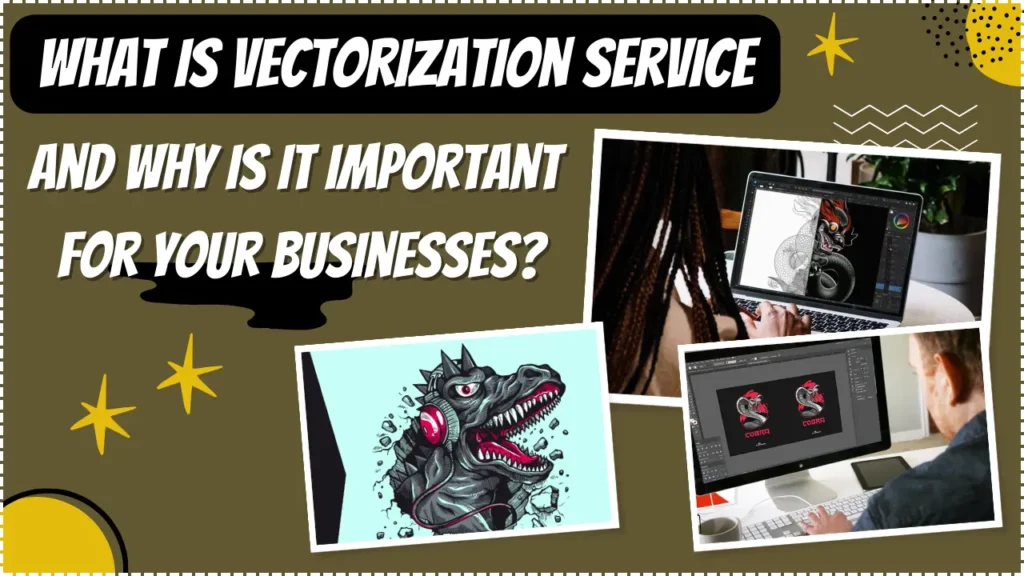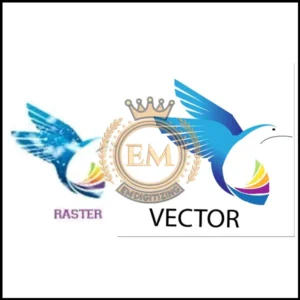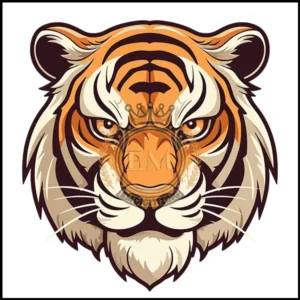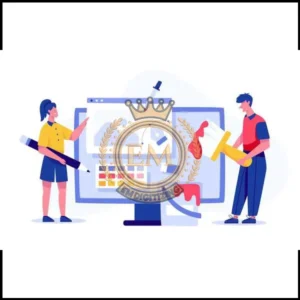Vectorization service is a powerful tool that has gained significant importance in the world of businesses. In simple terms, vectorization refers to the process of converting images or graphics from raster-based formats, such as JPEG or PNG, into vector-based formats, such as SVG or AI.
This process involves recreating the image using mathematical equations and geometric shapes, enabling it to be scaled infinitely without losing quality.

In today’s fast-paced and visually-driven market, businesses across various industries are recognizing the value of vectorization.
This article aims to explore the concept of vectorization service and its significance for businesses.
What Is Vectorization Service And Why Is It Important For Your Businesses?
What is Vectorization?
Vectorization is like giving your images a superhero makeover. It’s a process where raster images, made up of pixels, are transformed into clean and crisp vector graphics using specialized software.
By converting images into mathematical equations, vector graphics can be scaled infinitely without losing any quality or turning into a blurry mess.
Why Vectorization is Essential for Businesses?
In the fast-paced digital world, businesses need to be adaptable and versatile. Vectorization plays a crucial role in achieving that. By converting your images into vectors, you can effortlessly resize them without compromising quality.
This makes vectorized images perfect for different marketing mediums, from billboards to tiny social media icons. So, say goodbye to pixelated logos and hello to a consistent and professional brand image.
Impact of Vectorization on Design and Marketing:
Vectorization opens up a world of possibilities for designers and marketers. With vector graphics, you can easily manipulate shapes, colors, and sizes, giving you more creative freedom.
Plus, vector images look sharp and refined on every device, ensuring a consistent visual experience across platforms. So whether you’re designing a captivating brochure or crafting an engaging social media campaign, vectorization will make your work sparkle.
Benefits of Utilizing Vectorization Service:
The benefits of vectorization you’ll get, such as:
Enhanced Scalability and Flexibility:
Vectorized images are like chameleons; they can adapt to any size without losing their charm. They can be scaled up for billboards or scaled down for business cards, all while maintaining razor-sharp details.

This scalability and flexibility make vectorization essential for businesses that want to make a big impact without the hassle of multiple image versions.
Improved Image Quality:
Bye-bye pixelation, hello perfection! Vectorization eliminates the pesky problem of pixelation that plagues raster images. With vectors, your graphics will look smooth and crisp, no matter how close you zoom in.

This enhanced image quality adds a touch of professionalism to your brand’s visual assets, leaving a lasting impression on your audience.
Reduced File Sizes:
Say goodbye to hefty image files that slow down your website or clog up your email attachments. Vectorized images have significantly smaller file sizes compared to their raster counterparts.
This means faster loading times, improved website performance, and more efficient file sharing. So, you can have your cake and eat it too – high-quality graphics without the extra burden.
Key Applications of Vectorization in Various Industries:
Vectorization in Graphic Design and Advertising:
From logo design to advertising campaigns, vectorization is the backbone of graphic design and advertising. It allows designers to create stunning visuals that can be scaled across various mediums without compromising quality.

With vectorization, designers can bring their creative visions to life and captivate audiences with crisp and vibrant graphics.
Vectorization in Manufacturing and Engineering:
In the world of manufacturing and engineering, precision is paramount. Vectorization plays a vital role in creating technical drawings, schematics, and blueprints that are accurate and easy to understand.
By converting complex diagrams into vectors, engineers and manufacturers can communicate their concepts effectively, reducing error margins and streamlining production processes.
Vectorization in Fashion and Textile Industry:
Fashion and textile industries thrive on intricate patterns and designs. Vectorization allows designers in these industries to create intricate and scalable patterns that can be used for fabrics, prints, and embroidery.
Vector graphics make it easier to experiment with colors, sizes, and placements, enabling designers to create stunning pieces that are both visually appealing and practical.
Choosing the Right Vectorization Service Provider:
When it comes to selecting a vectorization service provider for your business, there are a few key factors to consider.
- Firstly, you’ll want to ensure that the provider has experience in vectorizing various types of images and designs. Look for a portfolio that demonstrates their versatility and ability to handle different file formats.
- Secondly, turnaround time is crucial. Time is money in the business world, so you’ll want a service provider who can deliver the vectorized files in a timely manner. Check if they offer expedited services or have a guaranteed delivery timeframe.
- Pricing is also an important factor to consider. While you don’t want to compromise on quality, it’s essential to find a vectorization service that fits within your budget. Look for transparent pricing structures and consider whether they offer any bulk discounts for larger projects.
- Lastly, don’t forget about customer support. It’s always reassuring to know that you can reach out to a knowledgeable and responsive team if you have any questions or concerns. Look for providers with strong customer reviews and testimonials.
Best Practices for Implementing Vectorization in Business Operations:
Integrating vectorization into your business operations can greatly enhance your design and production workflows. Here are a few best practices to consider:

- Incorporate vectorization into your design process: As you create new designs or work with existing ones, ensure that the files are in a vector format from the start. This will save you time and effort later on when making adjustments or resizing.
- Train your staff: Familiarize your team with the benefits and techniques of vectorization. Providing training on vector software and best practices will enable them to make the most of this technology.
- Regularly update software: Keep your vector software up to date to take advantage of the latest features and improvements. This will ensure optimal performance and compatibility with other design tools.
- Collaborate with vectorization service providers: Establish a working relationship with a reliable vectorization service provider. They can assist with complex projects, augment your in-house capabilities, and provide valuable insights into efficient vectorization practices.
Final Words:
Vectorization is an essential service for businesses looking to optimize their design processes, increase flexibility, and enhance overall visual quality.
By choosing the right provider, implementing best practices, and staying up-to-date with emerging trends, businesses can leverage the potential of vectorization to stay ahead in the digital age.
EMdigitizing: The Expert in Vector Art:
Are you looking for some help to get your design ready for screen printing?
Well, look no further than EMdigitizing! We are here to provide you with top-notch vector art services, and guess what?
We have an amazing deal just for you – 50% off on your first order! How cool is that?
Our team at EMdigitizing is super skilled in vectorization. They will carefully prepare your design for printing, making sure it’s done in high quality and at an affordable price.
So, no need to worry about the technical stuff – we’ve got you covered!
If you have any questions or need assistance, don’t hesitate to reach out to us. Our staff is always ready to help and they are available 24/7.
If you find this information helpful, feel free to share it with your friends too!
Now, go ahead and have fun stitching! We really appreciate you taking the time to read this.
Happy designing!
Frequently Asked Questions:
Vectorization is a term for transforming information into a numerical representation that computers can easily analyze. Instead of dealing with words or pictures, computers prefer to work with numbers. So, vectorization helps us convert data into lists of numbers called vectors. This process makes data more efficient, reduces file size, and increases flexibility.
If you want to vectorize an existing image, there are two main ways to do it. You can either use a vectorization service or design software.
Vectorization is the process of turning data into a special code that computers can easily understand. We use vectorization to make algorithms run faster and to make data work better with specific machine-learning models. It’s like translating information into a language that computers can speak fluently.
Vectorization plays a crucial role in improving the efficiency and accuracy of algorithms, especially when dealing with large datasets. By converting data into a numerical format, computers can process it more quickly and make better predictions or decisions.
The process of vectorization involves converting a raster image (made up of pixels) into a vector image (made up of mathematical equations). This can be done using various software tools, both online and offline. These tools help us transform images into a format that computers can easily understand and work with.
